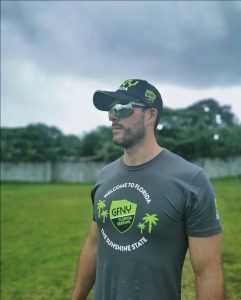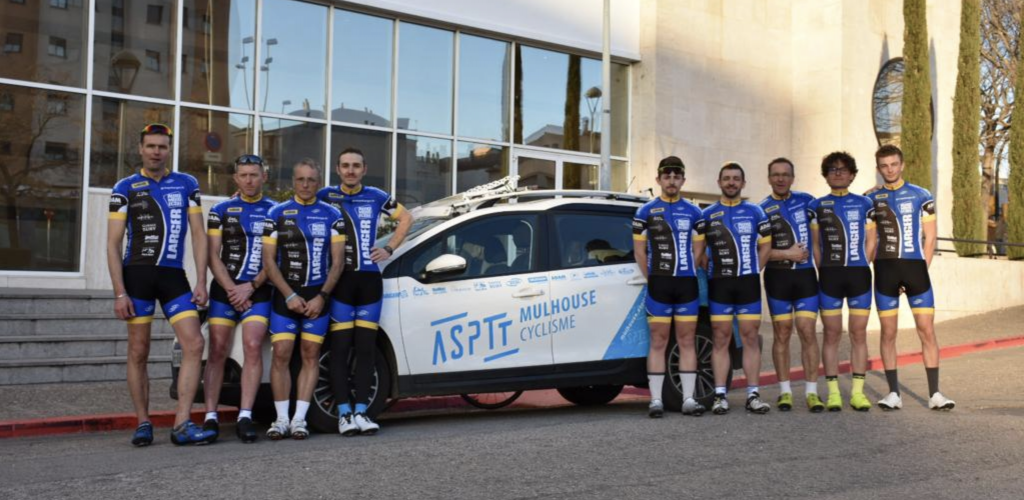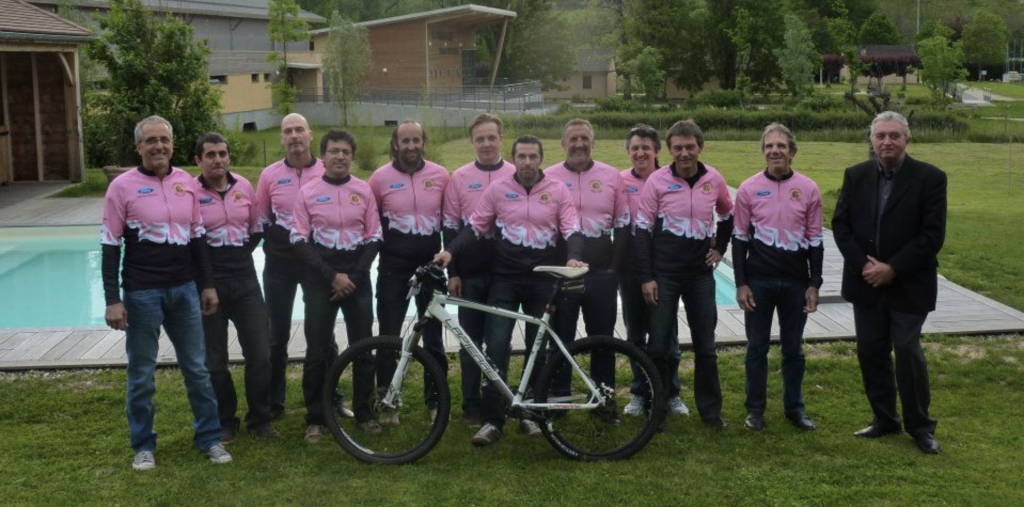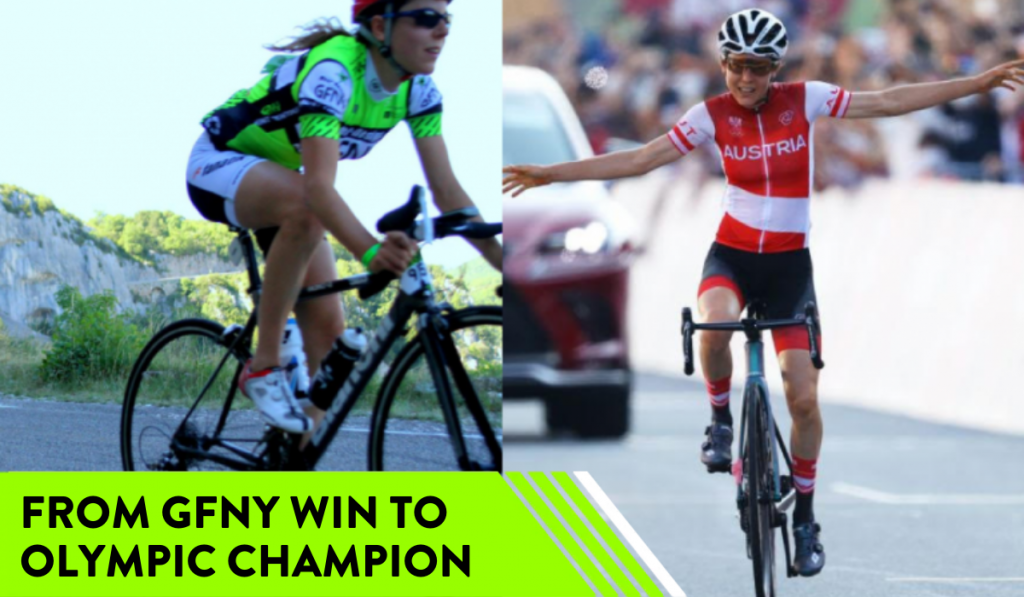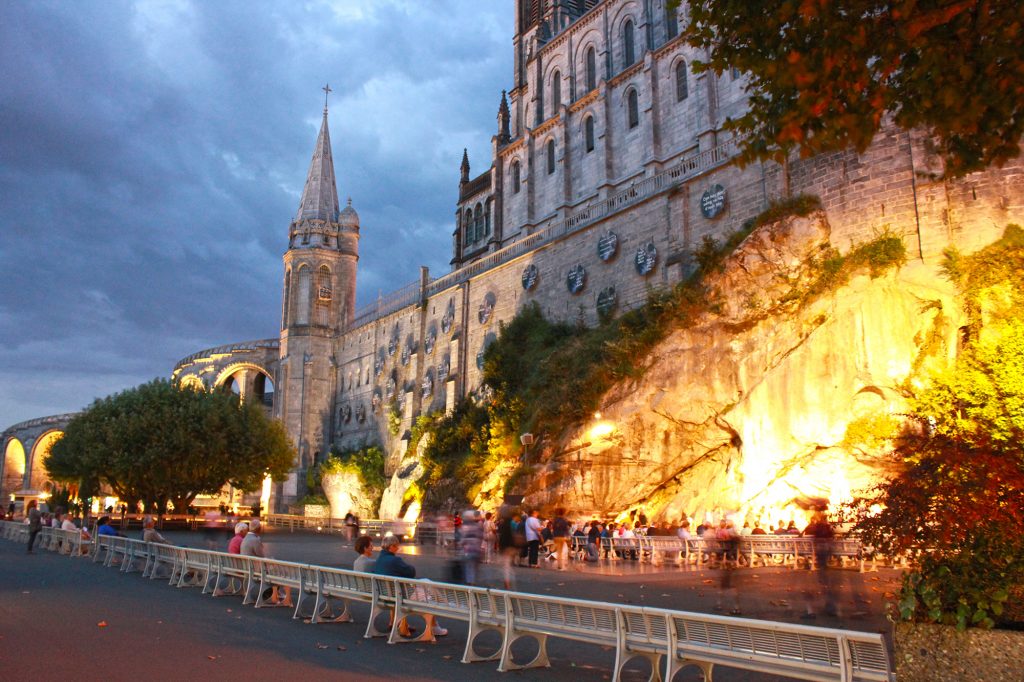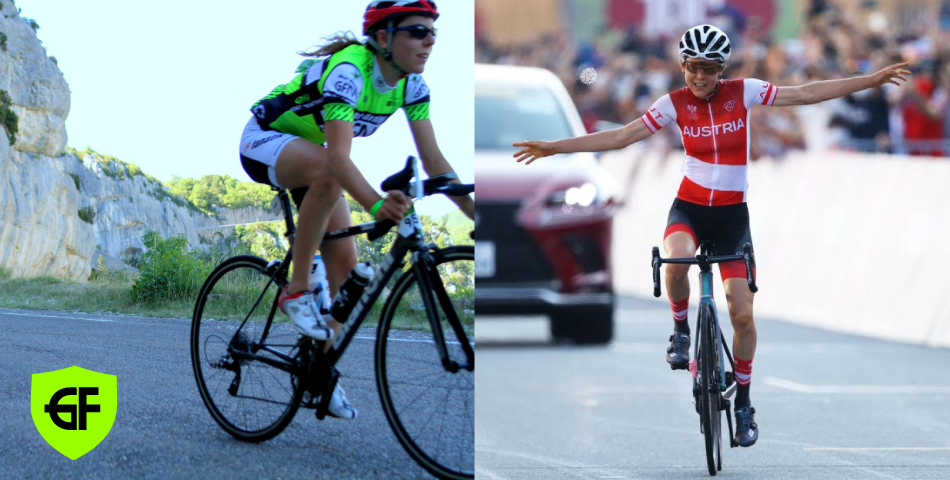
The Tokyo Olympics put an extraordinary event on display on July 24, 2021. Very early – from the gun in fact – Austrian elite amateur Anna Kiesenhofer broke away from the pack and rode for the Gold. To the amazement of the peloton, she opened a lead with two other riders that could not be brought back. A peloton heavily stacked with taken-for-granted “winners” and World Tour pros were stunned into an epic silence that spoke volumes about the state of how pro-riders are developed, and how few visibly reach their full potential.
Anna’s story, as with many unheard of pro-caliber cyclists’ stories, doesn’t begin with pro-development training organizations. Unlike many of the peloton that she faced in the Tokyo Games, Anna’s start in racing was granfondo. Two years before turning pro, Anna set the stage for her Olympic victory with an emphatic win at GFNY Mont Ventoux – at her first bike race ever after a running injury ended her short dabble into duathlon. Putting 45 minutes between herself and the heavily favored local pro, she demolished the field in the type of parcours commonly experienced by grand tour pros and 1-day monument racers.
The GFNY Mont Ventoux course featured two Category 2 and one Hors Categorie climb as well as miles of unprotected windy flats, and technical descents. To understand why this is important is to understand the difference between how professional cyclists are currently developed. There is a funnel and a system that decides who makes it through the ranks to the Continental and World Tour Pro levels, and who gets a day job and packs the car on Friday evening to hurriedly drive to whatever racing is available to them on the weekends.
Simply put, the current system is deeply flawed, and missing a golden opportunity to develop new and ready talent.
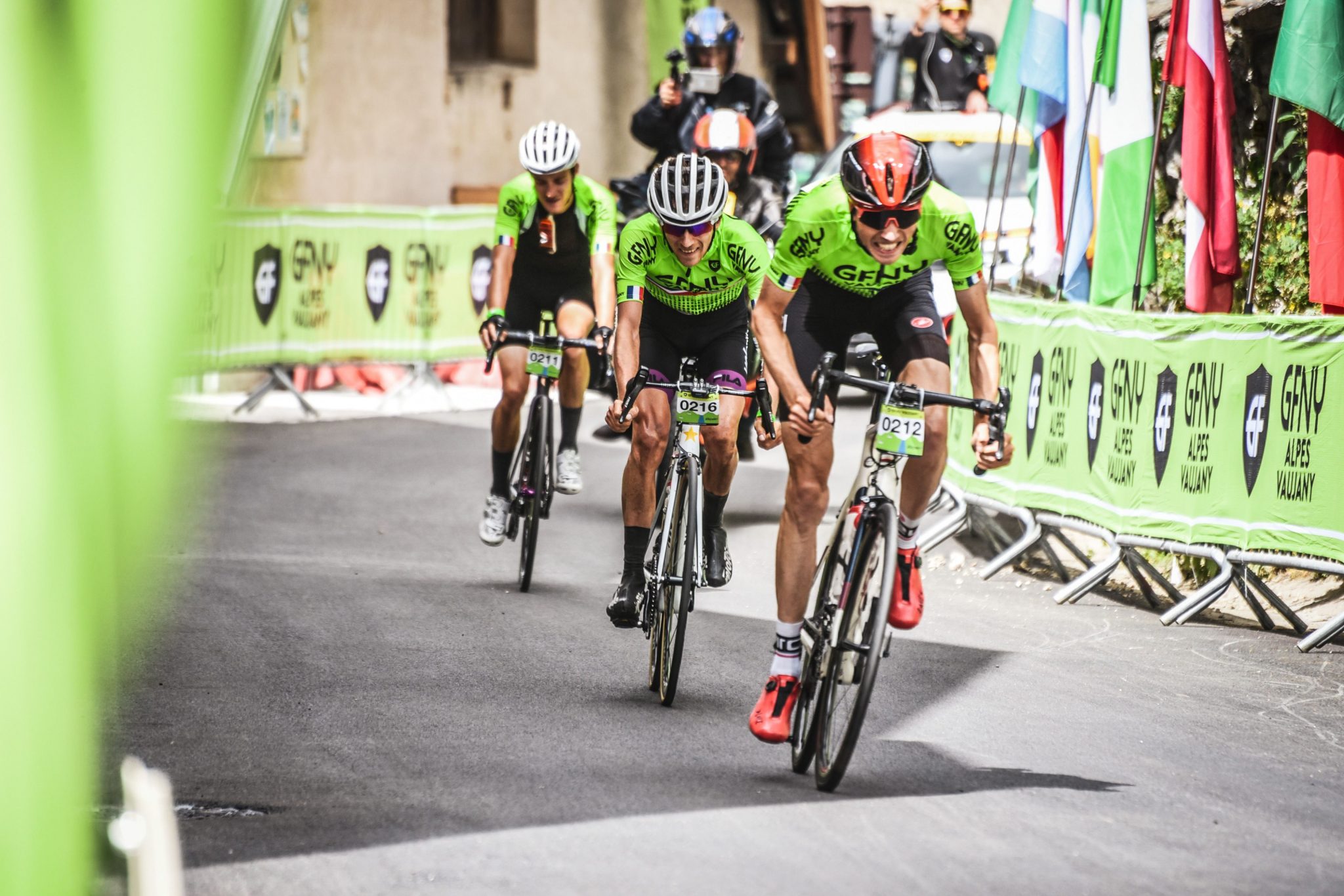
Identifying Talent
This could be a much more difficult problem to fix if it weren’t so easily identifiable. Under the current constraints, the types of short, circuit-based or criterium courses commonly raced by developmental pros do not favor the talents, build, and endurance capabilities of those that are made to be great general classification riders. Under these conditions, the racers that make an impression are those that can pack short bursts of explosive power in the form of staying on a front group acceleration or being able to create a sprinting attack several times in any given race. The racers that can generate that type of power stay on the front in these often flat and repetitious courses or sit on a lead-out train until their explosive burst is needed to punch forward. And they have the specific bike handling skills to be able to brave the claustrophobic conditions of a bunch sprint for the finish.
Over a ten-kilometer circuit loop, these developing riders often have the opportunity to scout the entire course in the process of their warm-up. Plotting where they will make their moves, and knowing where they have to exercise caution or just hang with the group to stay out of the wind. Sprinters that can generate enough power to sit on for the duration saving it for an epic conclusion thrive in this environment. They can make a name for themselves via the types of spectacular sprint finishes that put exclamation marks on the 1000 meters of hard effort that they put in for the course of the race. This is where the pro teams take notice, and where, for the most part, they do the majority of their prospecting for talent that they think they can develop into a specialist or a general classification contender.
But these conditions work counter to that of the general classification rider. Those that can climb, to put stable power over long distances, to time trial, and that have the large engine required to make it over the mountains and through long days in the saddle of 160 kilometers or more, are not born of this.
There is no dispute that pro teams have done well under the above conditions and have been able to develop talent from this system. But a pro team looking to develop real talent should be asking themselves how they can take their prospecting and development to the next level. Where are the opportunities to develop general classification skills within the above system? Where are the born, not made, general classification riders? Where are the long-distance domestiques that will pace the contenders through long stages, over the mountains, and into the promised land?

The Granfondo Solution
Professional cycling organizations trying to build truly successful development programs should have a firm understanding of what the granfondo / mass participation racing format buys them. This can be examined in two ways:
- By watching the elite racers that are placing in the top ranks of established granfondo events (using the true granfondo format of closed roads and a fully timed course), they can begin to build a development pipeline of talent that is already accustomed to the demands of long format stage racing and long format 1-day racing.
- By entering their developing racers in granfondo events, they can use these races as a diagnostic tool for understanding how these racers will perform under similar course conditions to what they would see at the pro-Continental and pro-world tour level.
Feeding the Pipeline
Finding the best cycling talent, like sales, or any other worthwhile endeavor is a numbers game. To find the best, you have to look at the most. But quantity may not be a good indicator of quality under the old systems. While there are no shortcuts to finding great talent, looking in the right places certainly has its advantages. As discussed, current systems favor specific types of riders and look upon accomplishments that don’t always have parity to pro cycling success as the criteria for making it to a pro team. As we have established, those who would flourish as general classification riders, actually languish under these conditions and eventually wash out of the system completely. Trying to mold those who are successful in this system to general classification requirements is a process that is difficult to be successful within the majority of cases.
By paying attention to the top granfondo events, teams would be scouting talent that actually fit the model of general classification riding, and that are tested under race conditions. The racers who place near the top of the standings in granfondos will likely possess the climbing ability, bike handling skills, and descending skills that those broken in via criterium or circuit riding will rarely have the venue or opportunity to develop.
The granfondo rider knows how to manage their energy level for a long day in the saddle, and puts the miles in their legs during training to be successful over courses of usually between 130 and 180 kilometers. This teaches time management, nutrition and hydration management, and energy management, and often how to work with a group – even if they are not on your team. Additionally, they will do so without the “big-league” perks of radios or team cars, while having to know how to deal with a rain jacket or vest for big descents or inclement weather, what to have in their bottles, and what food is most harmonious with their racing style.
“I qualified for the one-week Tour of Austria… It’s a long, tough, race with big mountain stages – but the only races that I had to prepare were 80-kilometer crits and circuit races. I was made for stage racing physically. Finally, I got frustrated and quit the sport and turned to racing (and winning) granfondos because that was the kind of racing I liked, that’s what I dreamed of, that’s what motivated me because that’s what my heroes did.”
– Stefan Kirchmair, former Austrian professional
Granfondo riders will learn to climb. If they are truly a general classification type rider or even a rider that would make a great domestique or team leader on the road, they will develop the skills needed to manage their energy on a climb and not blow up throughout the remainder of the course. Because what goes up must come down, granfondo riders will develop the bike handling skills to manage their speed, line, and balance during a long descent, and be able to use the time descending as a tactical advantage.
Finally, all of those skills translate into a big endurance engine over time in racing and training for granfondo events. Making the leap to larger stage races is a smaller feat when you have already developed the type of engine needed for a long day. This is endurance that just doesn’t come from those short explosive circuit races and takes time to develop if it can be developed in a traditionally trained pro rider at all.
Developing Complete Riders
The age-old problem in finding new talent is to take the right steps to develop it. Team directors for Continental and World Tour pro teams are overlooking a sterling opportunity to develop talent the right way by turning to the granfondo model. As we have covered in part two of this series (https://gfny.com/granfondo-the-future-path-of-pro-cycling/) the current model of pro developmental racing is in a state of rapid decay globally. As the races fail to achieve the scale, visibility, and thus financial return required to continue to put these types of races on, developing racers are losing opportunities to race, and teams are losing the opportunity to test these riders under the most realistic race conditions.
We have established that granfondo provides the scale, visibility, and sponsorship return required to manage races that set ideal conditions for testing these athletes. The format is a platform for the athletes to showcase themselves to prospective teams – to be sure. But once that goal is achieved, or once a rider has been signed to a developmental team, granfondo provides a coaching and development opportunity like no other.
Contrasting the current model, granfondo allows teams to develop talent in a multi-dimensional fashion. Far from catering to the one-dimensional model discussed earlier, a team director can use granfondo as a diagnostic tool to understand what a rider’s capabilities are for performing in high-pressure race situations, like staying with a breakaway, managing big climbs and technical descents, managing their own nutrition/hydration, and overall bike handling within the pack.
How these riders perform will give the team director valuable insights into what that rider’s role on a team can be, or if the rider should stay with the team at all. Above all, it gives riders with different capabilities a chance to show the team directors where they add value to the team composition, and how they can best serve the team in a general classification or specialist capacity. The example of Anna Kiesenhofer’s Gold medal victory in Tokyo exemplifies this point. The team director’s evaluating Anna’s performance in short circuit races would not have learned what elite granfondo riders already knew about Anna’s capabilities on a long and challenging course.
As with Anna’s example, the rider’s that might have been overlooked, or washed out based on not fitting the “crit model” create opportunities for teams to develop general classification skillsets prior to moving those riders into the Continental or World Tour ranks based on performances that don’t match the requirements of what it takes to stay in the show. The granfondo can create a race calendar full of opportunities for testing and learning different strategies for riders and their team directors, as well as providing the data necessary for team directors to work on specific aspects of rider training, skill development, and fitness.
Finally, granfondo will make developing racers more mature racers. Understanding the varying conditions, what to do if the car is not there to help them, and how to react in pressure situations, these conditions create character. They provide a means for the riders to prove to themselves that they can persevere when things are difficult and that left to their own devices, they will overcome adversity. There is so much more to professional cycling than watts per kilogram. There is adversity, mechanicals, punctures, weather, and so many things that are out of riders and teams’ control. When a rider learns how to overcome those challenges, that rider makes the team stronger.

Conclusions
All of this is not to say that granfondo is the only solution, but it should be an important part of the rider and team portfolio. Elite amateur riders and some pros are already riding granfondos for exactly the reasons called out in this paper. In Italy, where granfondo has always been mass participation racing, there have always been elite and pro-women in the fields. Specifically, it provides a place to race against competition at their level. Competitors need competition. For this reason, the opportunity to test developing athletes on challenging granfondo courses is a perfect opportunity to see what they can do, and how they can overcome adversity. A physical test, a skills test, a character test. Coupled with other development programs (we do not assert that these need to be abandoned but rather reassessed to understand the value they actually provide in assessing and developing new talent) granfondo is an essential tool for developing riders and team directors.
There are some perceptions, however, that stand in the way of granfondo as a professional development system. Specifically, in countries like the U.S. granfondo is seen as more of a “bike tour” event. Largely this is because bike events that run as bike tour-type events have taken on the granfondo or “fondo” name as a selling tool. These are not the events we advocate for here. Instead, authentic granfondos that feature controlled intersections and start to finish elapsed timing as a way to create the most professional race conditions possible are the races that will support this approach. Team directors willing to look at virtual racing data as a method of evaluating talent owe it to themselves to look at granfondo. If not “instead of”, then “along with” to make sure that no opportunities to develop the next wave of truly general classification riders are not overlooked.
Read the other two articles where GFNY’s CEO Uli Fluhme illustrates the role of granfondos for pro cyclists below:
Rethinking Cycling’s Future– A pragmatic proposal for the sport we love.
Granfondo – The Future Path of Pro Cycling
About the author
Uli Fluhme started following pro cycling in 1983, at 8 years old, when he watched his first Tour with his dad. He started racing himself when he was 16 and has not stopped. His boundless passion for cycling and racing has been a constant through his entire life and led him, together with his wife, Lidia, to create GFNY, the world largest cycling marathon series. He has experienced bike racing as an athlete as well as a race organizer in over 30 countries, for 30 years.
